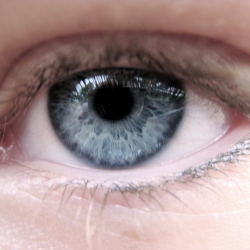
Researchers have combined semiconductor nanorods and carbon nanotubes to create a wireless, light-sensitive, flexible film that could potentially act in the place of a damaged retina. When they tested it with a chick retina that normally doesn’t respond to light, they found that the film absorbed light, sparking neuronal activity.
Patients with age-related macular degeneration (AMD), for example, could potentially benefit from such a device, the researchers from Tel Aviv University, the Hebrew University of Jerusalem Centers for Nanoscience and Nanotechnology, and Newcastle University say. AMD usually affects people age 60 or older who have damage to a specific part of the retina, limiting their vision.
